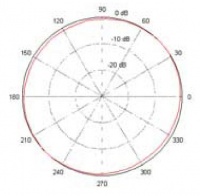The layout is also frequently encountered network are point-to-multipoint. If some node2 speak to the center access, this is the application of point-to-multipoint. A typical example of the layout of the point-to-multipoint is the use of wireless access points that provide connectivity to multiple laptops. Laptops do not communicate with each other directly, but must be in the region access point to be able to use the network.
Network point-to-multipoint can also be applied to our previous example at the university. For example, a remote building on the hill is connected to the center of the campus using a point-to-point. Rather than setting up multiple connections point-to-point to distribute the Internet connection, an antenna can be used as long as seen by some of these remote buildings. This is a classic example of the wide area connection point (a remote area on the hill) to multipoint (many buildings in the valley).
Please note that there are some performance issues with the use of the connection point-to-multipoint for very long distances, which will be explained later in this chapter. Type of connection may be used in some circumstances, but not to make the classic mistake by installing a radio tower with a big power in the middle of the city and expect to serve thousands of customers, like you would do with an FM radio station. As we shall see, two-way data networks behave very differently from broadcast radio.
Ref : http://opensource.telkomspeedy.com/wiki/index.php/WNDW:_Point-to-multipoint












